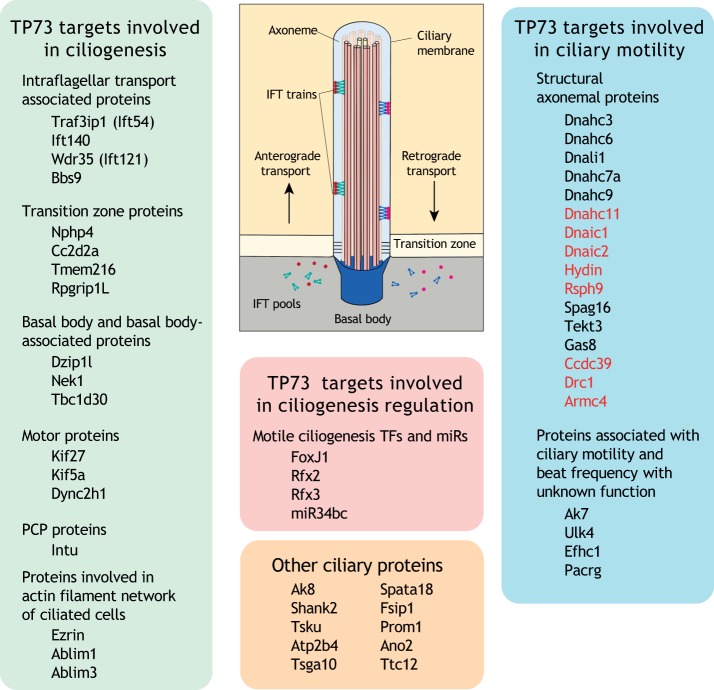Fig. 4.
TAp73 is the master transcriptional regulator of motile multiciliogenesis. Distinctive epithelia that line airways, brain ependyma, the female oviduct and the testicular efferent duct undergo motile multiciliogenesis by amplifying their centrioles to convert into basal bodies and then extend hundreds of motile cilia on their apical cell surface. Cilia beat vigorously and synchronously to generate directional fluid flow across tissue surfaces to move fluids. TAp73 occupies a position at the top of the gene network hierarchy of this program. It directly binds to promoter/enhancer regions of genes and activates the key ciliogenic regulators FoxJ1, Rfx2, Rfx3 and miR34bc, as well as nearly 50 structural and functional ciliary genes, eight of which are associated with known hereditary human primary ciliary dyskinesia syndromes (Hydin, Dnaic1, Drc1, Armc4, Dnahc11, Dnaic2, Ccdc39 and Rsph9, in red). The individual factors are grouped by functional class. Many of the ‘other ciliary proteins’ listed are also important for sperm development.

